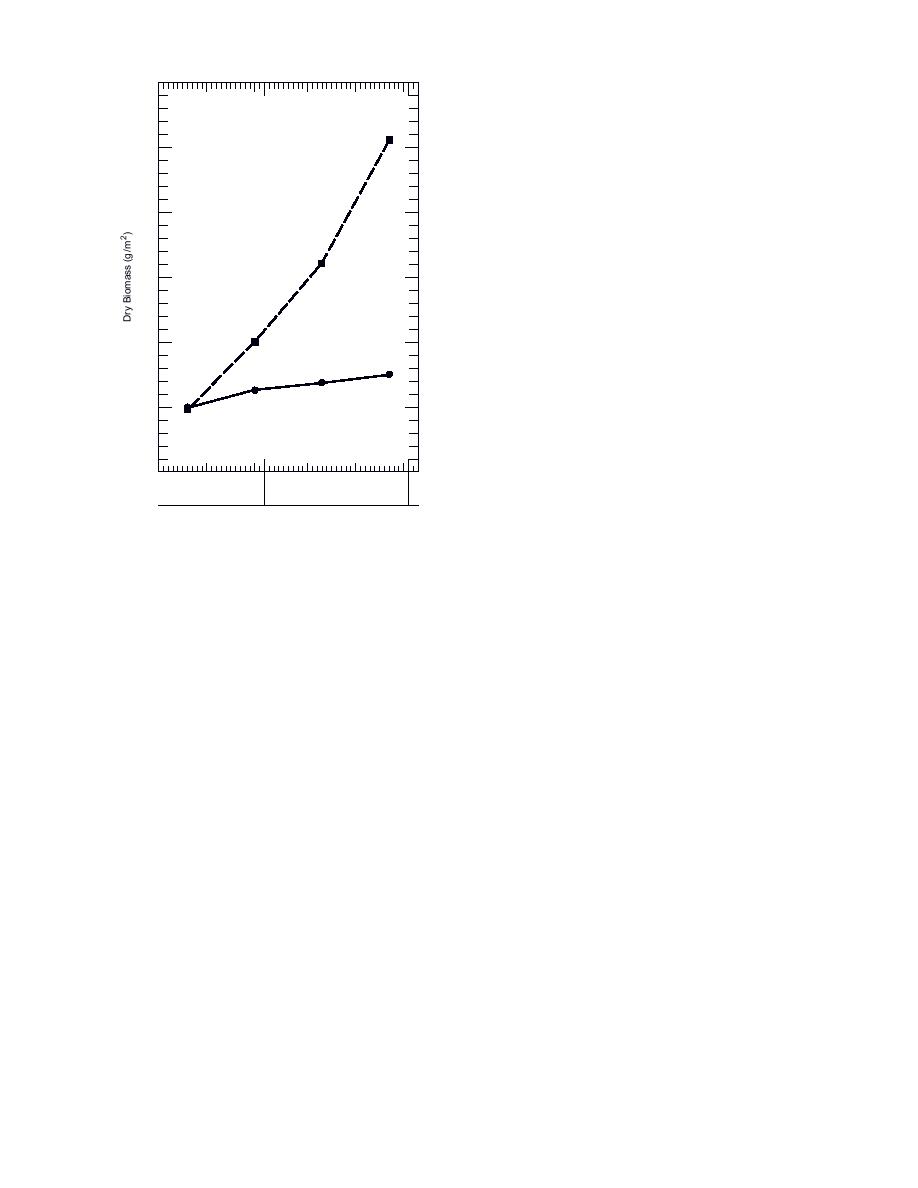
croclimate in a fine-fescue-dominated area, will
70
have an effect on PGR performance, and the
growth inhibiting effect of applying a PGR will
not be consistent over all turf areas. This inconsis-
60
tency may necessitate additional mowing during
the spring season. Although PGRs did not work
uniformly over all areas, the mefluidide treatment
at the recommended rate was consistent enough
50
between test locations covering many turf species
and microclimates to move it from the experi-
mental to the demonstration stage of trial.
Treated
40
Control of broadleaf weeds will be necessary
since the PGR is not effective in reducing their
growth rate. Future applications of mefluidide
should include a broadleaf weed herbicide. Rec-
30
ommendations for future trials or practices should
also include mowing the site 4 to 5 days before
Untreated
and after application of the PGR to obtain a uni-
form turf stand in terms of height. The PGR should
20
be applied in early May and the chemical should
be effective for a period of 4 to 6 weeks.
10
10
20
30
10
20
30
LITERATURE CITED
May
Jun
Figure 2. Plant yields recorded biweekly from PGR
CoStat (1988) Users Manual. Berkeley, California:
treated and untreated mixed turfgrass stands.
CoHort Software.
Duell, R.W., R.M. Schmitt and S.W. Cosky (1977)
Growth retardant effects on grasses for roadsides.
In Proceedings of the 3rd International Turfgrass Re-
mowing is a very subjective decision. For the pur-
search Conference (J.B. Feard, Ed.), Munich, Germany.
poses of this study, we have assumed that when
1113 July. Madison, Wisconsin: International
the turf reaches a height of 12.5 cm (5 in.), it should
Turfgrass Society, ASA-CSSA-SSSA, p. 311323.
be mowed.
Elkins, D.M. (1983) Growth regulating chemicals
Mefluidide applied at the recommended rate
for turf and other grasses. In Plant Growth Regu-
of 2.3 L/ha provided the best control of plant
lating Chemicals (L.G. Nickel, Ed.), Vol. II. Boca
height and seedhead development in 1995 (Fig.
Raton, Florida: CRC Press.
1). Mefluidide applied at the low rate of 0.8 L/ha
Field, R.S. and A.R. Witford (1982) Effect of simu-
provided some control, but not as much as the
lated mowing on the translocation of mefluidide
2.3-L/ha rate. Most sites seemed to have the same
in perennial ryegrass (Lolium perenne L.) Weed Re-
general trends of differences in growth control
search, 22: 177181.
between treatments. Reapplication of the same
Johnston, D.T. and J.S. Faulkner (1985) The ef-
PGR treatments the following season produced
fects of growth retardants on swards of normal
similar results in growth and seedhead retarda-
and dwarf cultivars of red fescue. Journal of Sports
tion. Rapid increases in plant height were not
Turf Research Institute, 61: 5964.
correlated with that for plant weight within the
control treatments or under normal growing con-
Reynolds, J.H., W.A. Krueger and C.L. Waller
(1993) Plant growth regulator effects on growth
ditions. Therefore, the timing of PGR applications
and forage quality of tall fescue. Agronomy Jour-
is critical to sufficiently inhibit the various growth
nal, 85: 545548.
spurts. The effect of PGR application on turf color
Tautvydas, K.G. (1983) Synergistic growth retar-
was highly variable, but the color did improve
dation of grasses with mefluidide/PGR combina-
after about two months.
tions. p. 5156. In Proceedings of the 10th Annual
The 1994 results showed that certain factors,
PGRSA Meeting.
such as early maturing quackgrass, the presence
of broadleaf weeds, and the effects of a cool mi-
Watschke, T.L., Prinster, and J.M. Breuninger
6



 Previous Page
Previous Page
